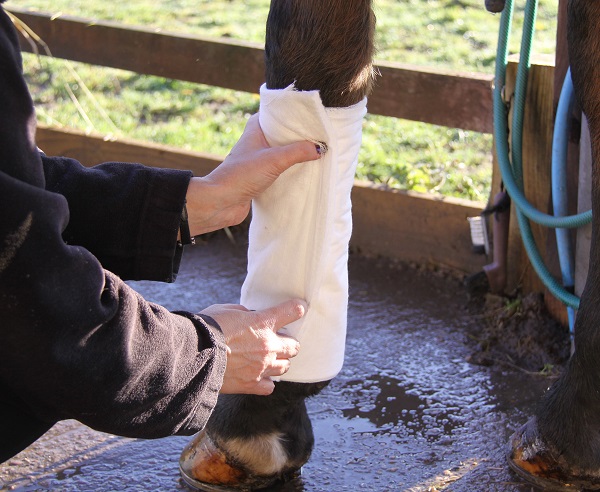Posted: 26th October 2018 | Back to news feed

The Three Stages of Bandaging
Bandaging plays an important role in wound management, particularly when it involves the lower leg. When applying a bandage to a wound, there are three main layers that should be used to help provide protection and facilitate healing.
The Primary Layer
The primary layer is in direct contact with the wound and provides protection and absorption. A low-adherent dressing can be placed onto the wound or on top of a wound hydrogel and prevents additional trauma upon dressing removal whilst absorbing any exudates.

The secondary Layer
The main function of the secondary layer is to protect the wound and control any swelling, and often comes in the form of a layer of padding over the primary layer. Veterinary Gamgee® is highly absorbent and uniform in thickness making it ideal for this purpose. When applying, smooth down to ensure there are no creases or folds.

The Tertiary Layer
The third, tertiary layer is the application of a bandage itself and is used not only to hold the first two layers in place but to apply additional pressure and protection. A coheshive bandage such as Equiwrap® is ideal, making sure that it is applied with even pressure and a 50% overlap. Remember firm but unrestrictive application is key.

For more information on the Robinson Animal Health Care range contact them on 01909 735000 or visit www.robinsonhealthcare.com
The Equestrian Index newsfeed is compiled from articles submitted by advertising members and expresses the opinions of those members. Watsons Directories Ltd shall not be held liable for any inaccuracies or mis-statements therein.